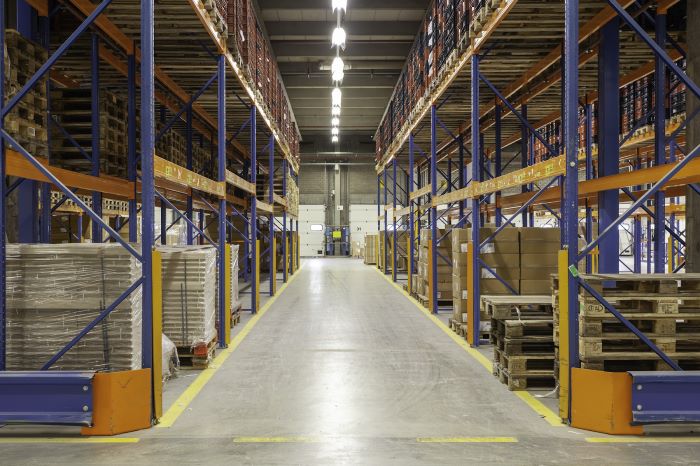Today’s warehouses are under pressure to do more with less—less floor space, less labor, but more speed and accuracy. e-commerce is growing at an unprecedented rate, industries rely more and more on extensive supply chains, and customer expectations are changing by the minute. In such a changing environment, operators are forced to rethink old systems to boost efficiency and get ahead. One big solution is scaling smarter by using vertical space. With the right approach, going upward (instead of outward) can transform a warehouse into a flexible, future-ready hub—all while balancing costs, safety, and sustainability.
Table of contents
Unlocking New Capacity with Smarter Upgrades
Floor space in warehouses is valuable and expensive to add. Rather than moving to a bigger building, many leaders are opting to optimize what they already have, making every cubic foot count. This is where vertical space comes into play. Modular upgrades—like shelves that reach higher, lift systems, and racking that can double or triple storage—turn empty and underused spaces into productive areas. For fast-growing businesses, this can be an excellent approach to scale capacity without taking on the costs and disruptions of a major relocation.
A popular and cost-effective option is using quality used mezzanines. These raised platforms create additional floors for storage, packing, or light manufacturing. Used mezzanines are quick to deploy, require minimal permanent construction, and can be moved or resized as business needs evolve. Operators benefit from rapid installation and lower upfront costs compared to new builds, while still meeting stringent safety regulations and minimizing downtime.
Deploying Robotics and Automation for Vertical Space and Reach
Robotics is one of the technologies leading warehouse automation. These, alongside other tools, have stepped in as a key partner to support warehouse operations, identify bottlenecks and wasted space, and even access vertical space that would otherwise be wasted or risky to use.
Robotics do so through custom systems such as automated storage and retrieval systems (AS/RS), vertical lift modules, and robotic picking arms allow teams to access high shelves efficiently, reduce accidents, and cut picking times.
Robotics-as-a-service (RaaS) models make these solutions accessible for facilities of all sizes. Instead of buying expensive equipment outright, operators can subscribe, scale up or down based on needs, and pay only for what’s used. Modern systems come with built-in safety features and smart design, meaning staff can interact safely and warehouses can grow vertically without sacrificing worker wellbeing.
Data-Driven Design: Building Up, Not Just Out
Adding vertical space and storage isn’t just about stacking more. This would add risks and make operations more complex. That is why it is important to partner storage solutions with smart design powered by data.
AI and analytics tools now help operators analyze traffic flow, picking patterns, and order volume to decide where to add racking, when to introduce automation, or which materials to store at each level. This approach keeps throughput high and bottlenecks low, helping busy teams hit tight shipping deadlines even as they grow.
By balancing technology with structural upgrades, operators can create spaces that adjust as demand changes. For example, placing fast-moving items at lower levels keeps pickers efficient, while slower-moving or bulky stock can go up top. As inventory needs shift, these setups can be easily reconfigured—supporting both business agility and staff productivity.
Sustainability and Safety: Building a Responsible Warehouse
Growth doesn’t have to come at the cost of the environment or safety. Modular and used mezzanine systems avoid waste by repurposing existing equipment. Many can be assembled with minimal tools and don’t need permanent fixtures, reducing material use and their impact on the building itself.
Automation also helps warehouses use less energy by running smarter routes and reducing idle time. These solutions paired with safety measures—like guard rails, sensors, and routine inspections—ensure that growing businesses can stay protected as they scale.
ROI and Deployment Speed: The Real Benefits

The numbers tell the story for vertical scaling. Used mezzanines and modular storage often pay for themselves quickly through boosted capacity and efficiency. Faster deployment times mean less disruption for ongoing operations—sometimes installation can be completed over a weekend or during off-peak hours, with minimal business interruption.
\Robotics and data-driven design also deliver fast returns. By cutting labor costs, scaling on demand, and reducing errors, operators see improvements in order accuracy, staff satisfaction, and customer loyalty. In a competitive logistics environment, these advantages help businesses stay ahead without overextending resources.
Scaling Upwards for the Future
In the modern world of logistics and warehousing, smart operators know that efficiency isn’t just about more space—it’s about making better use of every square foot. By combining vertical space and upgrades, automation, and thoughtful design, you can future-proof your warehouse, keep your team safe, and serve customers better—all without breaking the bank or the building’s footprint.










